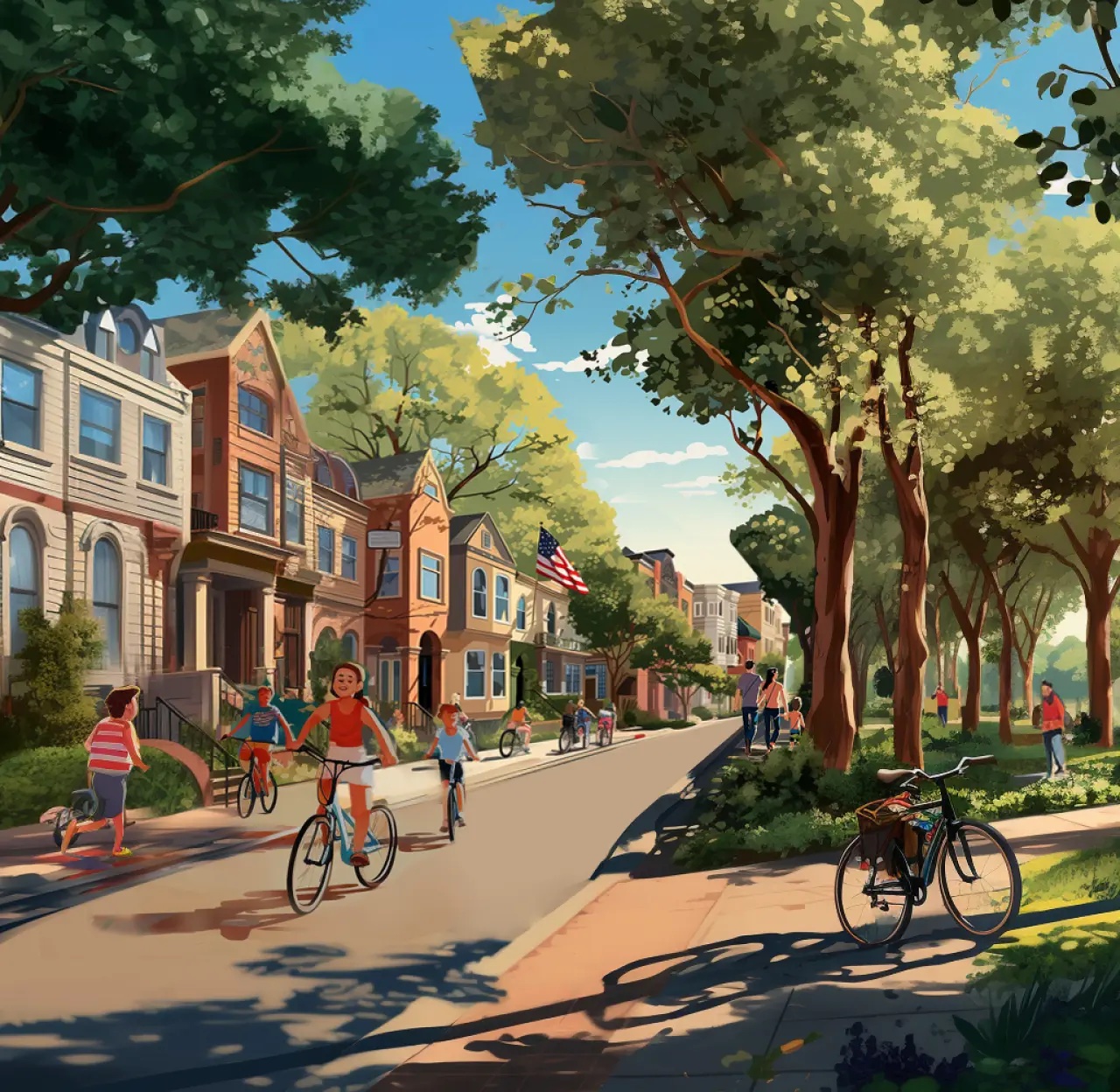California Forever dropped from the sky two weeks ago, like a lost chapter from Italo Calvino's Invisible Cities. It promised a utopia of low-carbon emissions, a jobs-housing balance, rowhouses (!), light rail, human-scale density, and, most marvelously, diversity social equity. Exquisitely, it created fans and detractors in seemingly equal numbers. Most observers, though, probably fell in the middle, able to imagine best- and worst-case scenarios with equal vividness. Naturally, many people’s fantasies are others' nightmares.
And, after a flourish of a week or so, California Forever has receded into the fog. If it revisits us, it will likely do so in the form of lobbying, ballot measures, environmental impact reports, and lawsuits until the end of our days.
So far, California Forever--the name of which sounds more like that of a cemetery than a metropolis--offers more of a lesson in public relations than in planning.
In the span of a week, coverage of California Forever went from a scoop in the San Francisco Chronicle to multi-article coverage in The New York Times, The Hill, The Guardian--and everything in between. I can't imagine a story related to urban planning that would get more, and swifter, coverage than this one did. Howard Jarvis would have to rise from the dead and insist on the repeal of Proposition 13. Clovis would have to invade Fresno. A whale would have to eat San Diego. Beverly Hills would have to build affordable housing.
That's how big it was.
The developer, Flannery Associates LLC, had been operating in stealth mode for five years until the Chronicle uncovered what was going on. Flannery's most exquisite move was to immediately post a website -- so fully-formed that it must have been designed and written ahead of time, like an aging celebrity's obituary, long before the news leaked. Flannery (apparently named for a road bordering its original parcel) is thus both an enormity and a mystery at the same time.
Planning news rarely "breaks." But, to Flannery Associates' credit -- whether the leak of their buying spree was accidental or calculated -- they gave us, perhaps unwittingly, a story that had it all: a "new city," a huge amount of (private) capital, a place (Solano County) that most people have never heard of, mild deception, and the audacity of the tech industry.
The plan's most Calvino-eseque elements so far are the renderings on California Forever's website, if you can call them "renderings." In some ways, they hold tremendous appeal: pretty, well detailed buildings overlooking coves and arbors, dappled in the light of a wine country afternoon. And, yet, they are obviously the product of artificial intelligence--just a little too perfect, and a little too cliched. A recent post on SF Gate confirms as much. By now, Flannery has surely gotten calls from every New Urbanist architect in the country.

The reasons why it got so much attention are more pedestrian and more dispiriting. The attention we gave to a Utopian vision, seemingly inspired by equal parts Tuscany and Philadelphia, says more about the current state of our cities -- and the surrounding discourse -- than it does about Flannery.
The vision for California Forever depends on not just empty land but also on blank pages. California Forever's zoning code has yet to be written. (Maybe it won't even have one.) It also doesn't have incumbent residents with entrenched interests. It doesn't have design guidelines. It doesn't have anxious politicians or overworked planning staffers. That's why they can dare to dream of something new, fresh, and attractive.
Back in the real world, pretty much nothing is happening. Some of the biggest development stories center on what's not getting built. That high-rise in San Francisco. A new ballpark for the A's. The Concord Naval Weapons Station redevelopment. Anything smaller than Versailles and denser than Alaska on the San Francisco Peninsula. Home mortgage rates just hit 8%.
Not exactly fodder for The New York Times.
On many levels, the project is off-putting, perhaps terrifying. And yet, there's useful lesson in California Forever's audacity. California Forever has a shared purpose: its investors have all spent a lot of money and they all want to make a lot of money. I give them credit for being, possibly, more than just capitalists. They seem to understand principles of good urbanism, and they seem to understand that California needs more housing.

That's more than we can say for some cities in this state.
Too much of the planning innovation and new development in California are taking place under duress (see: Builder's Remedy), with extreme reluctance (see: housing element updates), or in the face of recreational litigation (hello, Huntington Beach). None of this amounts to a vision. None of this amounts to an enthusiastic, optimistic consensus about what the state and its cities might strive for. As ever, the California Dream feels passive -- something that we participate in purely because we're here, somewhere near the beach, under the sun -- rather than something we actively, collectively pursue.
Sure, many new plans include progressive planning principles. But, they are usually buried deep in codes and general plan updates. They are often included to evade scrutiny of anti-development stakeholders. They lack exuberance. And the incrementalism is excruciating. We get a six-story podium building here; a dozen townhouses there. ADU's aplenty. If we're lucky, we end up with better cities by the time our grandkids graduate from college.
This leisurely pace is what prompted developer Christopher Meany to unload on planners when I spoke to him about his Treasure Island project: "Planners have to stop focusing on planning and start focusing on getting things built."
What this approach lacks is a vision -- a sense of enthusiasm or shared purpose. It's almost impossible to envision better cities in California because the new elements -- say, a well designed mixed-use building, or street furniture that might make a place walkable -- has to mingle with whatever outdated, Prop. 13-enabled ugliness is still hanging around.
So, I can forgive anyone who gets excited about California Forever. It's tantalizing to think that, just this once, we could learn from our mistakes and build something truly enlightened--exorcise the ghosts of Burnham, Corbusier, and Moses once and for all. But what the world wants and what the world builds are often two different things.
I am not suggesting that planners should pursue headlines. Doing so would be disingenuous and annoying. But we have to learn something from the flap over California Forever. However difficult planning in the real world may be, planners cannot cede an optimistic, excited vision of California's future to a venture capital fund.
Even if he predated the California Environmental Quality Act, Italo Calvino probably knew how hard it is to build utopia. It's why he conjured up cities a few hundred words at a time, never claiming that they would exist anywhere other than in the collective imagination. Now that DALL-E can do Calvino's job for him, it's hard yet to tell whether California Forever believes his fantasies are within reach—or whether California Forever is blind to his cautionary tale.
Perhaps it was, and is, both.
Images courtesy of California Forever.

